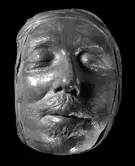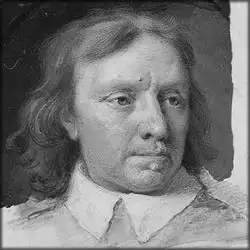The last words of Oliver Cromwell
Oliver Cromwell (1599 – 1658) was a descendant of Thomas Cromwell, Earl of Essex and minister to Henry VIII. Had he died at 40, Cromwell would now be forgotten and there would be no entry for him here. However, soon after that birthday he rose to become the most powerful figure in British revolutionary history and, after the forces at his disposal had deposed King Charles I, Cromwell became Lord Protector of England, Scotland and Ireland.
His final words, spoken on being offered a drink on the day of his death, were:
It is not my design to drink or to sleep, but my design is to make what haste I can to be gone.
The Letters and Speeches of Oliver Cromwell with Elucidations, Thomas Carlyle, 1904.
Background to Oliver Cromwell’s last words

The English Civil War was the most tumultuous period in English history and the events that led up to Cromwell’s demise are both momentous and well-recorded.
Cromwell’s actual death was less earth shaking – he died in bed of septecaemia on 3rd September 1658. More interesting is what happened to his body after death.
His supporters intended to have his body lie in state, following the pattern set by James I. Unfortunately, Cromwell’s body was poorly embalmed and began to putrefy before the lying in state could take place. As a consequence it was, unknown to those coming to mourn, a wooden effigy of Cromwell with a wax mask that lay in state at Somerset House, with a crown on a velvet cushion placed above his head. Cromwell’s actual body was secretly interred, probably on the 4th or 5th September 1658, in Westminster Abbey. The death mask, now in the British Museum and complete with Cromwell’s famous ‘warts and all‘, is probably the best-known death mask of English history.
History wasn’t done with Cromwell’s body even then. When the monarchy was restored and Charles II came to the throne he had less than fond memories of the man who had had his father beheaded. One of Charles’s parliament’s first acts was to order that Cromwell’s body be exhumed, hanged and decapitated. The body was thrown into a lime pit and the head impaled on a spike at Westminster Hall. That’s certainly vengeance in action, although there are well-substantiated accounts that another body was substituted for that of Cromwell’s before the hanging and that his remains were later held by the Cromwell family before eventually being interred in an unmarked grave in Cromwell’s college at Cambridge University in 1960.

